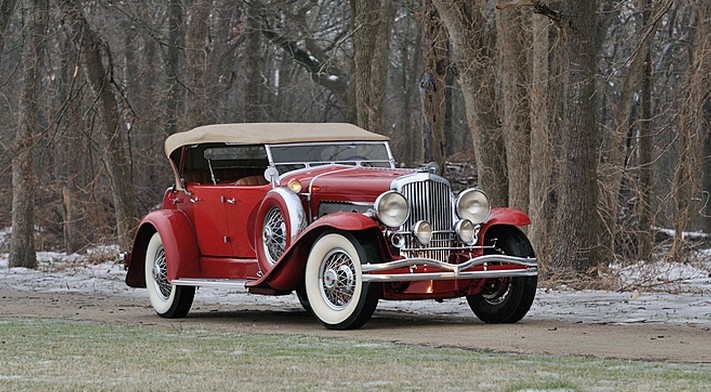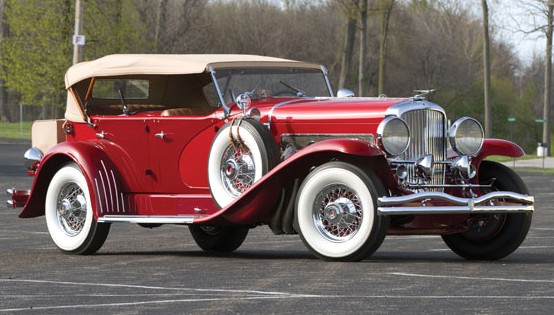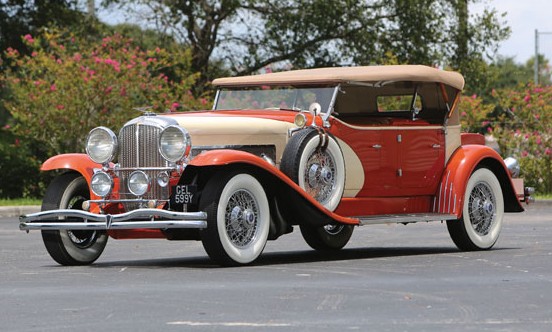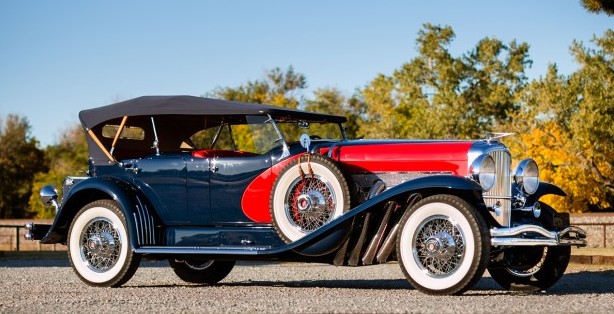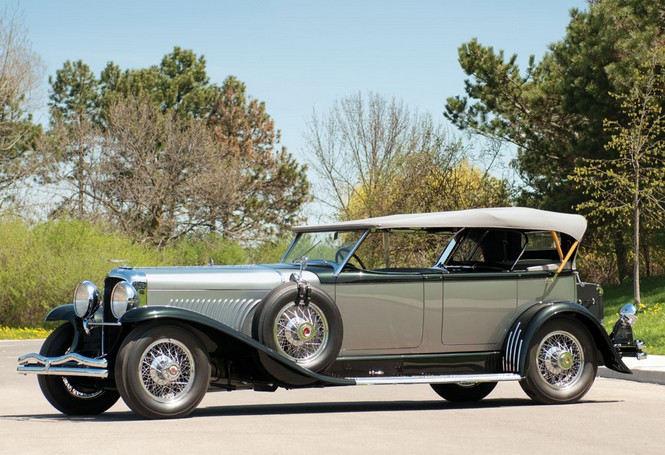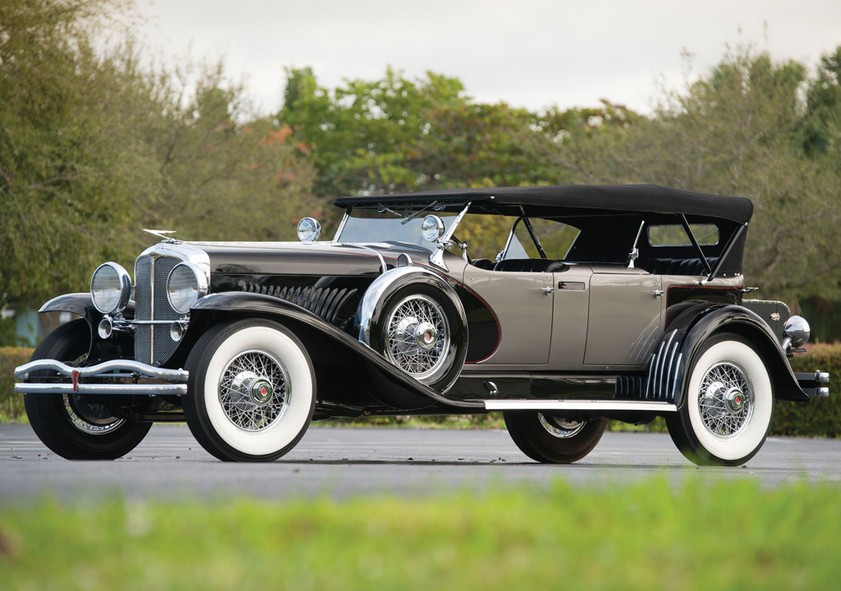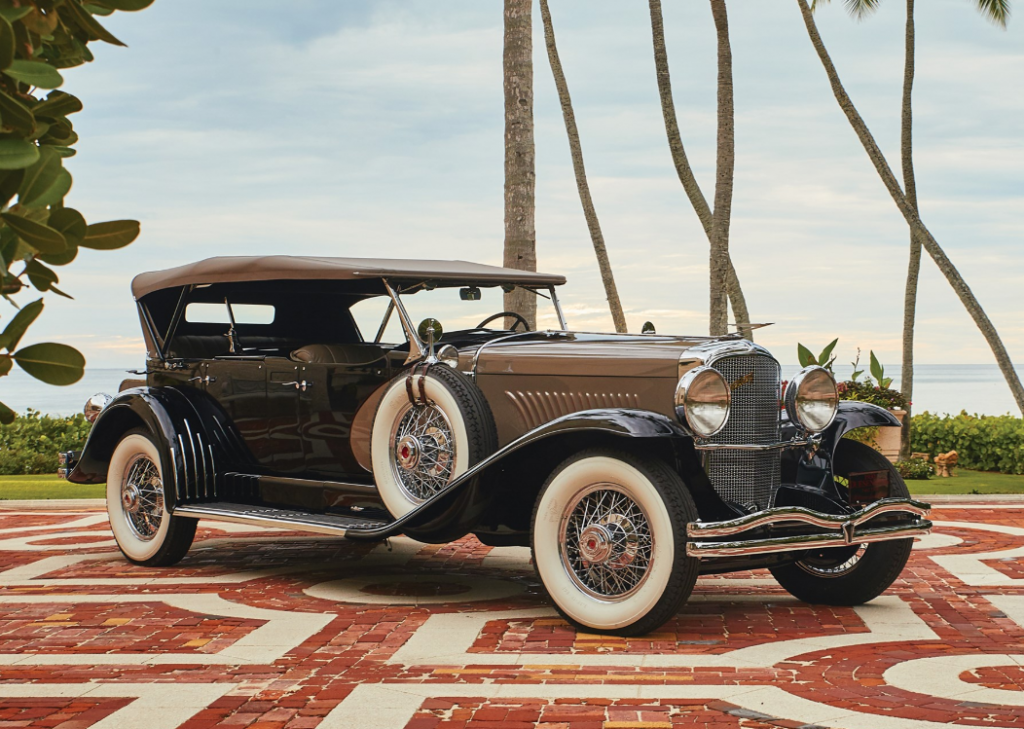1932 Duesenberg Model J Dual Cowl Phaeton in the style of LaGrande
Offered by Mecum | Houston, Texas | April 9-11, 2015
On December 1, 1928, Duesenberg debuted their new Model J at the New York Car Show. The car was an instant hit among those that could afford it. In the next year, the company built 200 examples before the stock market crashed and money dried up. Only a few hundred more were built before sales stopped in 1937.
The standard engine is a 6.9-liter straight-eight making 265 horsepower. This particular car was originally bodied by Rollston in limousine form. A few years after it was new, the body was swapped for a Dietrich Convertible Sedan. That body was lost in a fire.
In the 1970s, the car was restored and the current body – which was scratch-built in the style of the famous LaGrande Dual Cowl Phaeton. A supercharger was also added, upgrading the car to SJ specification (meaning 320 horsepower). It’s not an original SJ, but it is an original Model J chassis and engine. It’s very nice and you can read more here and see more from Mecum here.
Update: Sold $500,000.
Update: Not sold, Mecum Monterey 2015, high bid of $550,000.
Update: Sold, Mecum Monterey 2016, $600,000.
Update: Not sold, Mecum Monterey 2017, high bid of $550,000.

